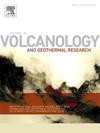Microearthquakes identification based on convolutional neural networks and clustering techniques
IF 2.4
3区 地球科学
Q2 GEOSCIENCES, MULTIDISCIPLINARY
Journal of Volcanology and Geothermal Research
Pub Date : 2025-02-07
DOI:10.1016/j.jvolgeores.2025.108282
引用次数: 0
Abstract
Microearthquakes are critical for understanding volcanic activity, leading to monitoring many volcanoes worldwide with seismic sensor networks. These networks generate a substantial amount of data, making visual analysis challenging. Consequently, researchers have focused on developing automatic microearthquake recognition systems over the past decades. A primary challenge with these systems is their reliance on labeled databases for training supervised learning models, where the output labels depend on the database labels. We propose using clustering algorithms in conjunction with a Fine-tuned Convolutional Neural Network (CNN) as a feature extractor to identify overlapping microearthquakes, and other types of microearthquakes withoutneeding labeled datasets. This methodology has two stages: The First stage relies on Transfer Learning, to specialize the CNN in microearthquake recognition. The Second stage uses the Fine-tuned CNN as a feature extractor. This methodology is applied to the Cotopaxi Volcano and validated in the Llaima Volcano. It uses unsupervised databases to find clusters of isolated events with similar characteristics to Long Period (LP), Volcano Tectonic (VT), Tremor (TRE), among others. Additionally, it identifies a cluster with overlapping microearthquakes. In the validation stage, 79 % of the VT events are associated to the same cluster without the need to adjust the Fine-tuned CNN. This test is performed on a dataset of a volcano never seen by CNN or Clustering algorithms. Normalized Entropy is used as a metric to verify the generalization of knowledge, the proposed work is compared with Uniform Manifold Approximation and Projection for Dimension Reduction (UMAP). The proposed work obtains 0.04 lower uncertainty with respect to UMAP.

基于卷积神经网络和聚类技术的微震识别
微地震对于了解火山活动至关重要,因此可以用地震传感器网络监测世界各地的许多火山。这些网络产生了大量的数据,使得可视化分析具有挑战性。因此,在过去的几十年里,研究人员一直致力于开发自动微震识别系统。这些系统的主要挑战是它们依赖于标记数据库来训练监督学习模型,其中输出标签依赖于数据库标签。我们建议使用聚类算法结合微调卷积神经网络(CNN)作为特征提取器来识别重叠微地震和其他类型的微地震,而不需要标记数据集。该方法分为两个阶段:第一阶段依靠迁移学习,使CNN专攻微震识别。第二阶段使用微调CNN作为特征提取器。该方法应用于Cotopaxi火山,并在Llaima火山得到了验证。它使用无监督的数据库来寻找具有与长周期(LP),火山构造(VT),震颤(TRE)等相似特征的孤立事件集群。此外,它还确定了一个具有重叠微地震的集群。在验证阶段,79%的VT事件关联到同一个集群,而不需要调整微调CNN。该测试是在CNN或聚类算法从未见过的火山数据集上执行的。采用归一化熵作为度量来验证知识泛化的有效性,并与统一流形逼近和降维投影(UMAP)方法进行了比较。该方法相对于UMAP的不确定度降低了0.04。
本文章由计算机程序翻译,如有差异,请以英文原文为准。
求助全文
约1分钟内获得全文
求助全文
来源期刊
CiteScore
5.90
自引率
13.80%
发文量
183
审稿时长
19.7 weeks
期刊介绍:
An international research journal with focus on volcanic and geothermal processes and their impact on the environment and society.
Submission of papers covering the following aspects of volcanology and geothermal research are encouraged:
(1) Geological aspects of volcanic systems: volcano stratigraphy, structure and tectonic influence; eruptive history; evolution of volcanic landforms; eruption style and progress; dispersal patterns of lava and ash; analysis of real-time eruption observations.
(2) Geochemical and petrological aspects of volcanic rocks: magma genesis and evolution; crystallization; volatile compositions, solubility, and degassing; volcanic petrography and textural analysis.
(3) Hydrology, geochemistry and measurement of volcanic and hydrothermal fluids: volcanic gas emissions; fumaroles and springs; crater lakes; hydrothermal mineralization.
(4) Geophysical aspects of volcanic systems: physical properties of volcanic rocks and magmas; heat flow studies; volcano seismology, geodesy and remote sensing.
(5) Computational modeling and experimental simulation of magmatic and hydrothermal processes: eruption dynamics; magma transport and storage; plume dynamics and ash dispersal; lava flow dynamics; hydrothermal fluid flow; thermodynamics of aqueous fluids and melts.
(6) Volcano hazard and risk research: hazard zonation methodology, development of forecasting tools; assessment techniques for vulnerability and impact.

 求助内容:
求助内容: 应助结果提醒方式:
应助结果提醒方式:


